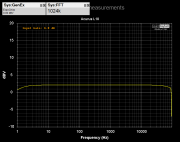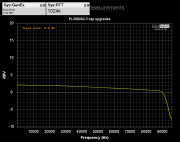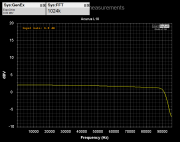Those op-amps have phase shift...and so some can be unstable driving the capacitive DC blocking circuit.
Which OPAMPs are you referring to? The OPAMPs we use are the Texas Instruments, Burr-Brown Division, OPA134 or the dual channel OPA2134. These are 8MHz Gain Bandwidth, 20V/us Slew Rate, 0.00008% @ 1kHz THD+Noise, 100db Common Mode Rejection Ratio, 120db Open Loop Voltage Gain, FET Input unity-gain stable devices that provide excellent dynamic behavior over a wide range of load conditions including high load capacitance. They can be driven from +/-2.5V to +/-18V Rails and will swing the output to within 1V of the Rail Voltage for maximum headroom in audio circuits.
From the Texas Instruments Datasheet:
"The OPA134 series of operational amplifiers are free from output phase-reversal problems. Many audio
operational amplifiers, such as the OP176, exhibit phase-reversal of the output when the input common-mode
voltage range is exceeded. This can occur in voltage-follower circuits, causing serious problems in control loop
applications. The OPA134 series operational amplifiers are free from this undesirable behavior even with inputs
of 10-V beyond the input common-mode range."
And it's worth noting that phase shift is meaningless in itself. A constant delay (which delays all frequencies equally) results in a consistent phase shift, in which all frequencies arrive at the same time. And this will be the case as long as the phase shift is linear with frequency.
Viewing the "Open Loop" Phase vs. Frequency chart on the datasheet, the Phase Shift is a linear -90.0 degrees from 100Hz to 200kHz. Of course, our OPAMPs are used in a closed loop (with feedback), so the chart is a worst case scenario.
See the Datasheet, page 8:
https://www.ti.com/lit/ds/symlink/o...l=https%3A%2F%2Fwww.ti.com%2Fproduct%2FOPA134
If this sounds like an advertisement, it is. I believe this is the best AUDIO OPAMP available today.





